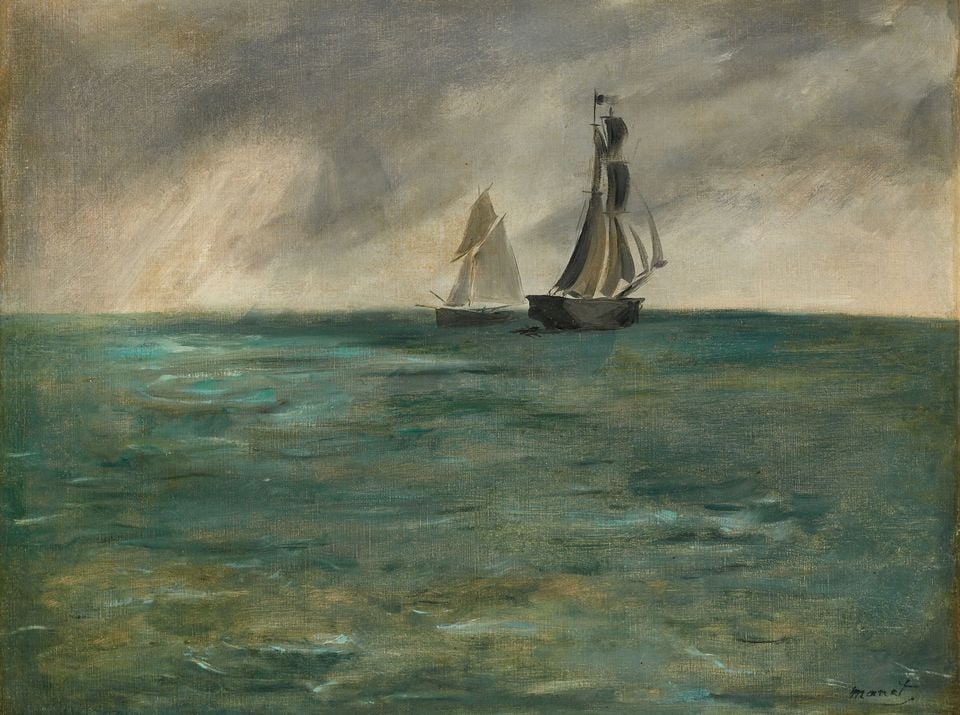Art World
The Kunstmuseum Bern Is Selling a Stormy Manet Seascape Previously Owned by the Infamous Collector Cornelius Gurlitt for $4 Million
The work is heading to the National Museum of Western Art in Tokyo.

The work is heading to the National Museum of Western Art in Tokyo.

In an unprecedented move, the Kunstmuseum Bern in Switzerland, which holds the vast former collection of Cornelius Gurlitt, the reclusive son of the Nazi art dealer Hildebrand Gurlitt, has agreed to sell a work from the infamous estate.
The work, Manet’s Marine, Temps d’orage (1873), is being sold to the National Museum of Western Art in Tokyo for $4 million. It is the first work the Swiss museum is deaccessioning from the vast collection of 1,500 objects, which Gurlitt donated upon his death in 2014.
“Obviously, letting go of a work is one of the toughest decisions to make, so we cannot say we are exactly happy about it,” Nina Zimmer, the director of the Kunstmuseum Bern, tells Artnet News. “But we have incurred a lot of expenses dealing with the Gurlitt estate, which is tough to bear as a small museum.”
Although at least nine of the artworks in the extraordinary collection, which includes examples by Edvard Munch, Henri Matisse, and Paul Cézanne, were either seized from their rightful Jewish owners or acquired under duress, the Manet has been classified by researchers as “green,” meaning it is “proven or highly likely not to be Nazi-looted art.”
The $4 million sum came from an independent appraisal of the work, and will cover the expected deficit resulting from the museum’s acceptance of the controversial estate. It factors in provenance research carried out in collaboration with the German Lost Art Foundation; restoration work; legal costs; and the organization of two exhibitions exploring the legacy of the Gurlitt collection. Zimmer says that if the final sum of those costs ends up being lower than $4 million, the museum will donate the surplus to fund further provenance research.
The work was chosen in part because it is one of the few with a relatively clear provenance, and also because it was once owned by Japanese industrialist Kōjirō Matsukata, whose collection of Western art formed the basis of the Tokyo museum’s collection.
“Under the circumstances, I think it was one of the best solutions we could find,” Zimmer says.
In a statement, Kunstmuseum Bern board member Marcel Brülhart said the museum accepted the Gurlitt collection with the responsibility to clarify its provenance and to restitute any looted art. “The board of the museum has always made clear that it does not want to profit financially from the inheritance,” Brülhart said. “However, the museum cannot bear any substantial deficit from the Gurlitt project.”
“I’m glad the board took the decision to accept the estate,” Zimmer says. “The Gurlitt case changed the climate and discussion of provenance research in Switzerland forever. Do I sometimes feel overwhelmed by the task? Of course. But we are making strides.”
Matsukata, the Japanese industrialist, built his collection when he was living in Europe in the first half of the 20th century. But after the Nazis invaded France, he returned to Japan, entrusting some of his paintings with a retired Japanese navy officer who ended up selling 20 of them, including the Manet, at some point between 1940 and 1942 to raise money to maintain the rest of the collection. Somewhere along the way, the Manet ended up in the hands of Hildebrand Gurlitt, but the Gurlitt Provenance Research Project has determined that it was most likely not Nazi-confiscated property.
Still, it remains unclear how many hands the painting passed through before it came to the collection of Hildebrand Gurlitt, meaning that “shreds of doubt” linger as to its exact provenance. “This is how provenance research today functions,” Zimmer says. “We work with likelihoods, because new research can always surprise you.”
Although the museum is satisfied with the painting’s “green” status, Zimmer says that if any evidence emerges that the work was stolen, the Japanese museum will be refunded and the work will be restituted to its rightful heirs.
Since the Gurlitt collection came to the Kunstmuseum Bern, six of the nine works identified as looted or sold under duress have been restituted. Several of those have gone to the market and fetched considerable prices, including Max Liebermann’s Two Riders on the Beach (1901), which sold at Sotheby’s London for nearly £1.9 million ($2.9 million) with premium in 2015, more than three times its high estimate.